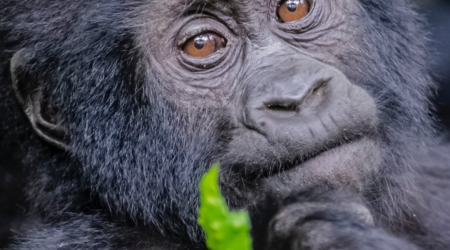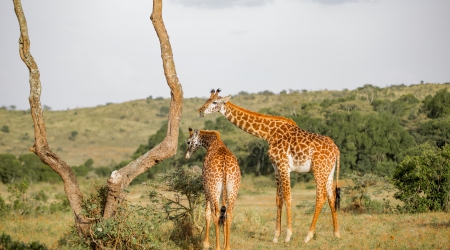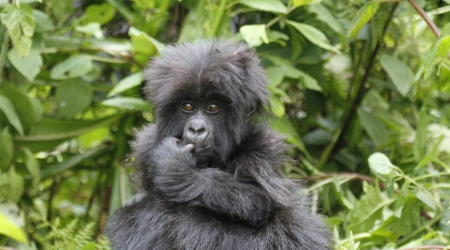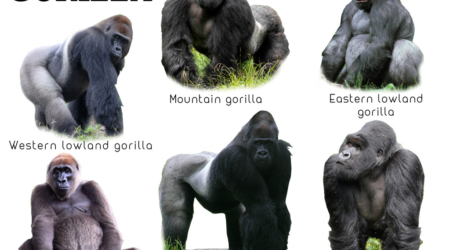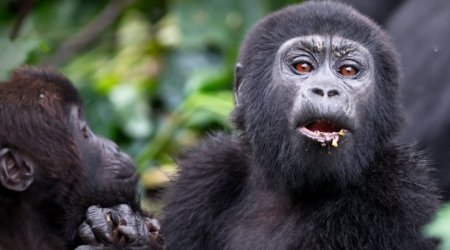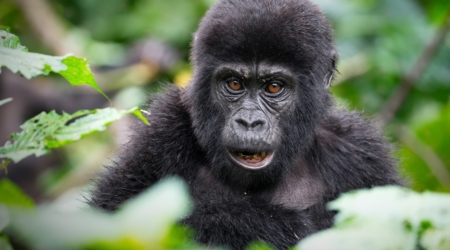Few primates capture attention like mountain gorillas and chimpanzees. These two species belong to the great ape family. Their presence in Central and East Africa shapes many high-value trekking experiences and primate-focused safaris.
Each species lives with patterns that reflect deep evolutionary roots. They have adapted to specific ecological zones through complex behaviours, physical adaptations, and intricate group dynamics.
Gorilla trekking often leads visitors through montane and bamboo forests. These excursions follow strict permit systems and designated trail networks managed by local authorities. Chimpanzee tracking, on the other hand, involves more fast-paced forest movement. Participants follow habituated groups using radio communication between guides to monitor activity in real time.
Understanding both species helps contextualise each guided primate experience. From locomotion to foraging strategies, every aspect reveals how they interact with their environments.
This article outlines key differences with a focus on taxonomy, morphology, behaviour, and conservation. The goal is to give professionals, field guides, and nature interpreters a reference point that deepens field knowledge.
Read Also: Gorilla Trekking FAQs.
Taxonomy and Classification
Mountain gorillas and chimpanzees belong to the Hominidae family, also known as the great apes. This group includes humans, orangutans, gorillas, and chimpanzees.
Mountain gorillas are a subspecies of the eastern gorilla. Their scientific name is Gorilla beringei beringei. They exist only in two populations: one in Uganda’s Bwindi Impenetrable Forest, and another shared by Uganda, Rwanda, and the Democratic Republic of Congo.
Chimpanzees fall under the species Pan troglodytes. They occur widely across equatorial Africa, in regions west and north of the mountain gorilla range. Unlike gorillas, chimpanzees have multiple subspecies and a broader genetic spread.
From an evolutionary perspective, humans share a closer genetic link with chimpanzees than with gorillas. However, both species exhibit intelligence, memory, and social behaviours that offer insight into early human development.
When guiding guests or interpreting information in the field, always distinguish between species and subspecies. This adds scientific value to the guest experience and ensures responsible information sharing.
Permitting bodies and conservation organisations use precise taxonomy when issuing access rights or managing group habituation schedules. Knowing these classifications helps avoid confusion, especially in briefing sessions or field lectures.
Physical Characteristics
Fieldwork with great apes begins with observation, and nothing introduces a species better than its physical form. Shape, size, movement, and expression provide immediate insights into how each primate lives and interacts with its environment.
Overall Size and Build
Mountain gorillas appear more robust than other primates. Adult males weigh between 140 and 200 kilograms and can reach 1.7 meters when upright. Females typically weigh about half that. Their broad chests, thick necks, and muscular arms give them a powerful frame, especially in motion.
Chimpanzees weigh significantly less. Adult males average between 40 and 60 kilograms and stand around 1.2 meters when upright. Their build favours mobility, with lean muscle mass and longer limbs relative to body size. This gives them greater ease in arboreal movement.
Locomotion and Movement
Gorillas practice knuckle-walking as their primary mode of movement. Their weight shifts to the forelimbs, which support much of the body mass during travel. They walk deliberately and follow established trails within their home range.
Chimpanzees also use knuckle-walking, but they climb and swing with more frequency. Their shoulder joints allow greater rotation, which supports climbing and suspension from branches. During forest excursions, chimpanzees often move in bursts, changing direction and elevation quickly.
Facial Features and Expressions
Mountain gorillas have a flatter nose, smaller ears, and large jaws. Their dark eyes sit close together, giving them a focused, often contemplative look. The brow ridge is prominent, especially in adult males.
Chimpanzees have more expressive faces. Their mouths form shapes that reflect emotion and intention. With a smaller brow ridge and wider mouth, they display subtle changes in mood through facial expression. Field researchers and guides use these cues to interpret group dynamics in real time.
Hair and Colouration
Gorillas grow thick black or dark brown hair across most of their body. Adult males develop silver or grey hair across the back, which gives rise to the term “silverback.” Their hair helps insulate against the cooler temperatures in montane forests.
Chimpanzees have sparser body hair with finer texture. Their facial skin may range from light to dark, and infants often show pale faces that darken with age. Their coats do not thicken seasonally, which reflects their residence in warmer, lowland forests.
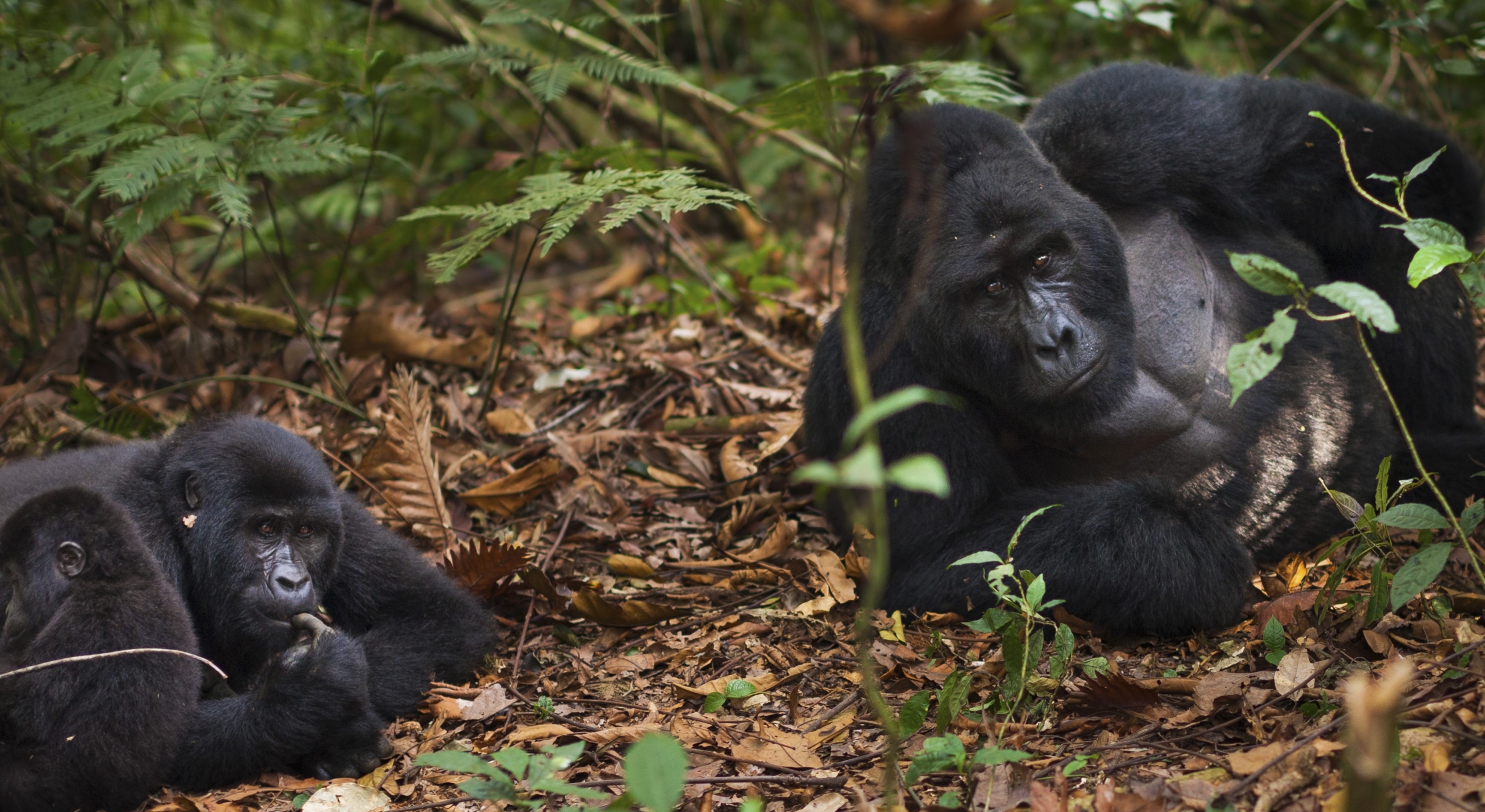
Sensory Perception and Physical Strength
Both species possess strong senses of smell, sight, and hearing. Gorillas rely more on physical presence than speed, using strength for protection and dominance. Chimpanzees, though smaller, show high agility and fast reaction times, which they use in hunting and climbing.
When guiding groups, these details help explain how each species fits into its environment. Body structure directly relates to movement, foraging range, and daily routines in the wild.
Habitat and Range
Both mountain gorillas and chimpanzees live in forests, but their geographic range, elevation preference, and habitat types differ in clear and meaningful ways. These environmental factors shape their diets, behaviour, movement, and even their daily rhythm.
Mountain Gorilla Habitat
Mountain gorillas inhabit montane and submontane forests. They occupy elevations between 2,200 and 4,300 meters above sea level. These conditions bring cooler temperatures, mist, and high rainfall throughout the year.
The two primary populations live in the Virunga Massif and Bwindi Impenetrable National Park. The Virunga group spans three countries: Uganda, Rwanda, and the Democratic Republic of Congo. These parks use cross-border coordination to manage gorilla trekking and protection efforts.
Gorilla groups move within a defined home range, usually between 4 and 25 square kilometres. Guides and trackers rely on daily monitoring to locate them before any trek begins. These ranges rarely overlap between groups due to group dominance and feeding requirements.
Chimpanzee Habitat
Chimpanzees live in lowland tropical rainforests, woodland-savanna mosaics, and riverine forests. Their altitude range stretches from sea level to around 2,800 meters, depending on location. However, most chimpanzee tracking experiences occur in forests between 900 and 1,500 meters.
They inhabit a much broader geographic band across equatorial Africa. This includes over twenty countries from West to East Africa. Protected areas such as Kibale National Park in Uganda and Nyungwe Forest in Rwanda offer guided chimpanzee experiences that rely on habituated groups.
Chimpanzees have larger home ranges than gorillas. Some groups move across 20 to 50 square kilometres, depending on food availability. This wide range requires guides to use radio coordination and field reports to track locations each morning.
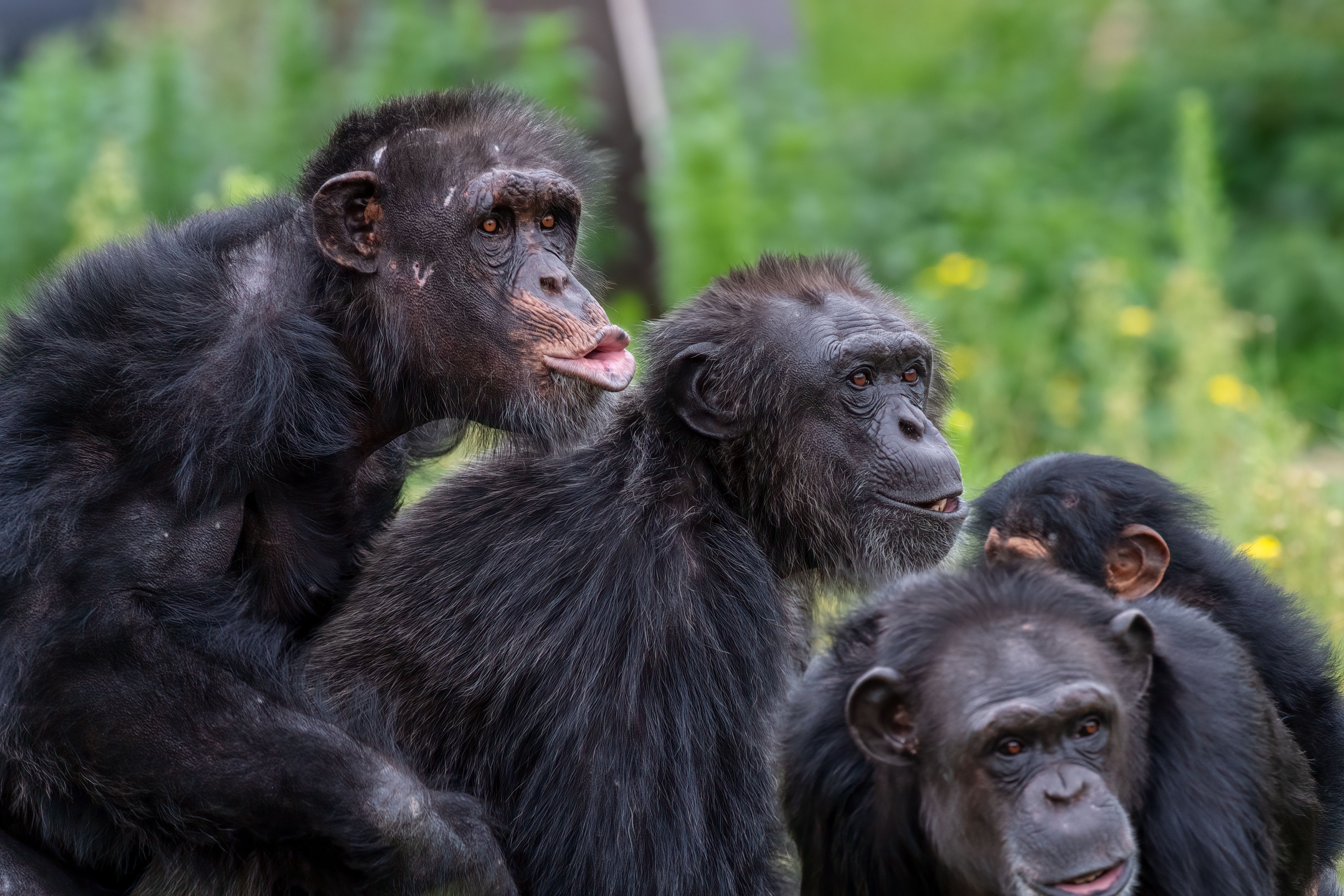
Environmental Impact on Experience
Each habitat creates a different guiding dynamic. Gorilla tracking typically requires elevation gain, slow movement, and focused observation in quiet zones. Chimpanzee tracking calls for agility, fast response, and clear radio communication. Weather, foliage density, and trail type also influence the briefing and preparation for guests.
Key Takeaways: Mountain Gorillas vs. Chimpanzees
Each primate species brings its way of being into the forest. Observation becomes more meaningful when you recognise those distinctions without simplifying or ranking them.
Mountain gorillas move with intention, maintain close group bonds, and reveal strength through stillness. Their presence often invites quiet focus and extended pauses.
Chimpanzees respond to social tension with action. They shift group size, form alliances, and adjust movement based on resource shifts and social cues.
In both cases, the forest becomes a stage for memory, emotion, and instinct. When guides learn to read the space between movements, they carry more than facts. They carry context.
That context builds integrity into every guided experience. It gives meaning to what you see and purpose to how you explain it.
Use what you know to shape field time that teaches without performance. Keep the science clear, the tone grounded, and the delivery human.







